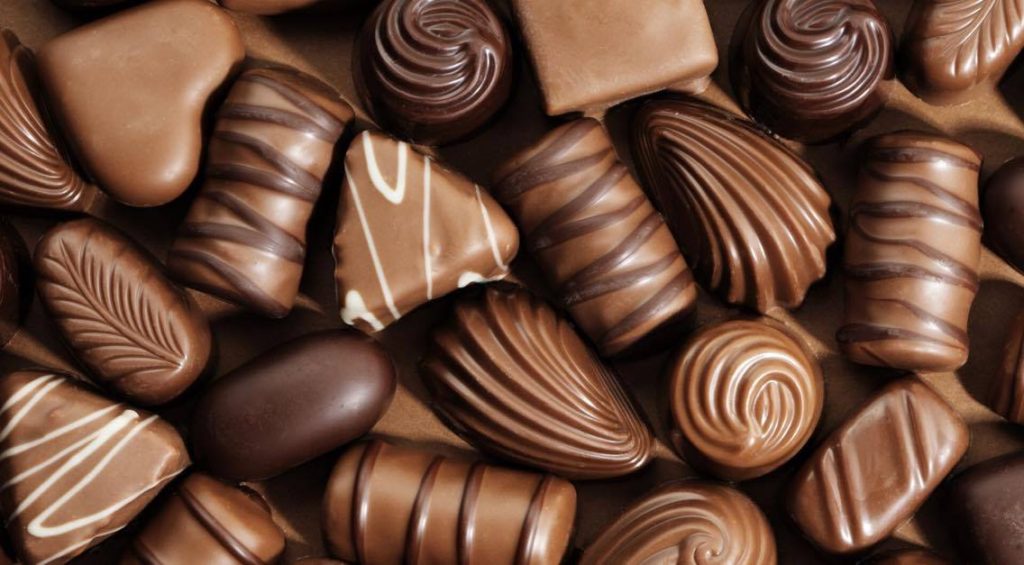Table of Contents
CHOCOLATE HISTORY AND SCIENCE
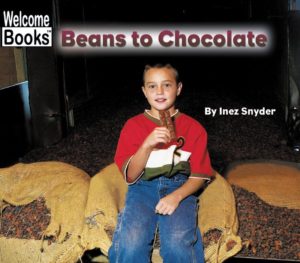
|
Inez Synder’s Beans to Chocolate (Children’s Press, 2003) traces the making of chocolate from cacao bean to candy kiss in 24 photo-illustrated pages with a simple large-print text, for ages 3-5. (The book is one of the “How Things Are Made” series; other titles include Wax to Crayons, Milk to Ice Cream, and Trees to Paper.) |
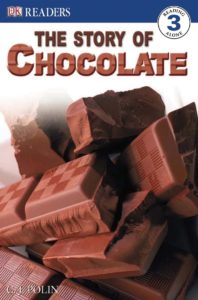
|
C.J. Polin’s 48-page The Story of Chocolate (DK Publishing, 2005) is divided into six sections: “Chocolate trees,” “An ancient treat,” “To Europe and beyond,” “Chocolate factories,” “Making chocolate today,” and “All kinds of chocolate.” The book is illustrated with lush color photographs. For ages 5-10 (recommended as a read-alone book for grades 2-4). |
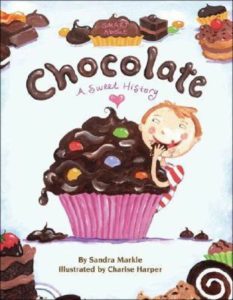
|
Sandra Markle’s Smart About Chocolate: A Sweet History (Grosset & Dunlap, 2004) is a cleverly designed overview of chocolate written in the style of a creative kid’s school report and illustrated with photos and catchy bright-colored kid-labeled maps and drawings. In 32 pages, it manages to cover everything from the Mayas to Milton Hershey, plus a bit of chocolate science, chocolate recipes, and a reference list. For ages 5-10. |
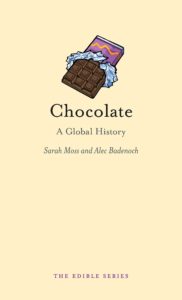
|
Sarah Moss’s Chocolate: A Global History (Reaktion Books, 2009) is one of an extensive short (128 pages) series on food history. Many titles, among them Bread, Cheese, Tea, and Milk. For teens and adults. |
| Visit the San Francisco Exploratorium’s Sweet Science of Chocolate for an excellent interactive chocolate experience, including video clips of an Amazon cacao plantation and an American chocolate factory, interviews with scientists, and a hands-on chocolate experiment. | |
| Chocolate contains about 380 different chemicals. Learn all about it at Neuroscience for Kids: Discovering the Sweet Mysteries of Chocolate. | |
| The dark side of chocolate: find out why not to feed it to the dog at The Curious (Toxic) Chemistry of Chocolate. | |
| From Chicago’s Field Museum, visit All About Chocolate for chocolate word puzzles, a Fun-Facts-based illustrated history of chocolate, an online activity in which kids can make a chocolate bar from scratch, and an assortment of kid-friendly chocolate recipes, including Mexican hot chocolate and chocolate modeling clay. | |
| Also from the Field Museum, see the Educators’ Resources page for a terrific downloadable resource kit, Cocoa Connections: From Beans to Bars, with multiple lessons grouped under “Chocolate and the Environment” and “Chocolate and Culture.” | |
| From California’s KQED Quest science series, The Sweet Science of Chocolate is a video on chocolate science targeted at middle-school-level kids with an accompanying downloadable teacher’s guide. | |
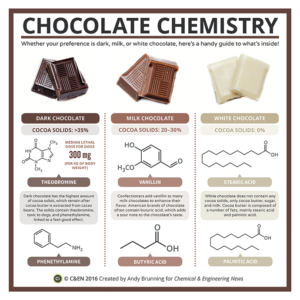 |
Learn all about the chemistry of chocolate.
Also see Toxicity and Aphrodisia: The Chemistry of Chocolate. |
 |
Measure the speed of light with chocolate! You’ll need a microwave and a chocolate bar. Check it out at the Smithsonian’s Quantum Chocolate. |
A CHOCOLATE PILOT AND A CHOCOLATE ENTREPRENEUR
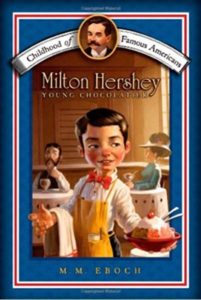
|
In the Childhood of Famous Americans series, Milton Hershey: Young Chocolatier by M.M. Eboch (Aladdin, 2008) is the rags-to-riches story of the famous Pennsylvania chocolate entrepreneur for ages 7-11. |
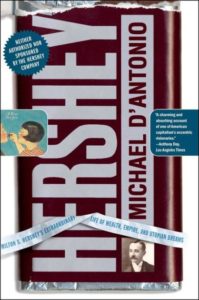
|
For older teenagers and adults, see Michael D’Antonio’s Hershey: Milton S. Hershey’s Extraordinary Life of Wealth, Empire, and Utopian Dreams (Simon & Schuster, 2007), a comprehensive reader-friendly biography with cover photo of a gigantic Hershey’s chocolate bar. |
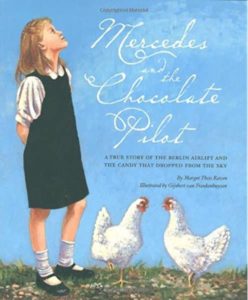
|
Margot Theis Raven’s Mercedes and the Chocolate Pilot (Sleeping Bear Press, 2011) is based on the true story of a young German girl during the days of the Berlin Airlift, when American cargo pilot Gail Halvorsen began dropping chocolate bars (attached to little parachutes) to the blockaded children of West Berlin. Mercedes writes a letter to Halvorsen, asking him to look for her house, which has white chickens in the yard. An epilogue describes how the two met when Halvorsen visited Germany in 1972. For ages 6-10. |
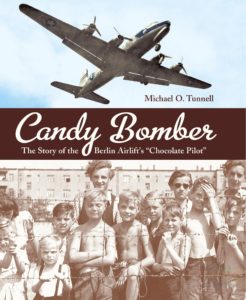
|
Michael O. Tunnell’s Candy Bomber: The Story of the Berlin Airlift’s Chocolate Pilot (Charlesbridge Publishing, 2010) is a more detailed account of the Airlift and Gail Halvorsen, the “candy bomber.” Illustrated with black-and-white photos, for ages 9-14. |
